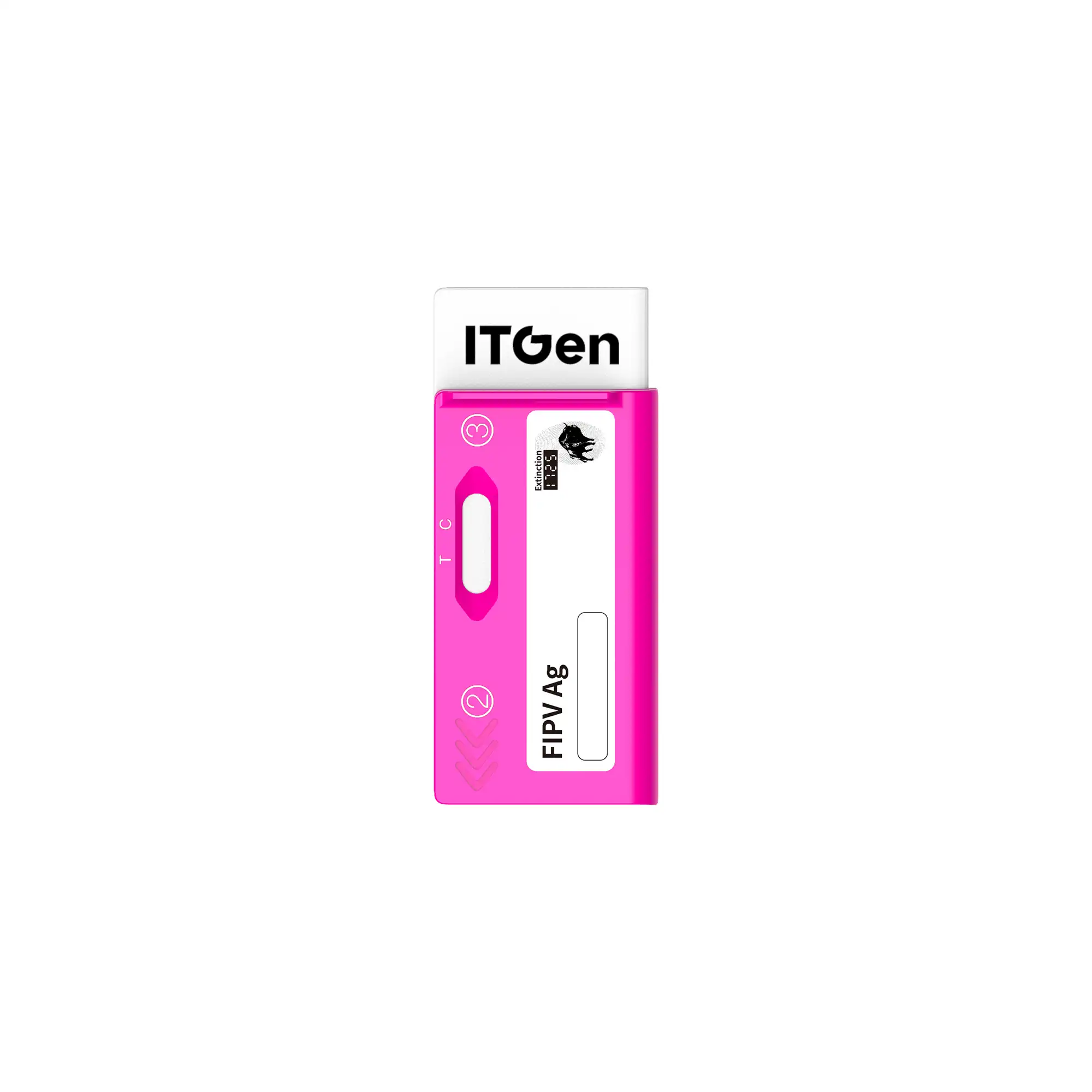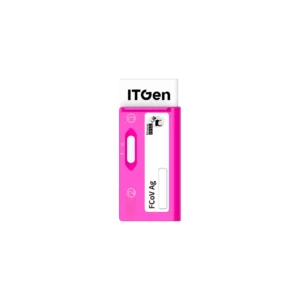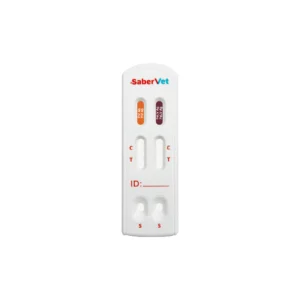Description
Product Parameters
| Production Name | ITGen Feline Infectious Peritonitis Virus Antigen Rapid Test |
| Target Analyte | Feline Infectious Peritonitis Virus Antigen |
| Specimen Type | fresh feces, rectal swab or ascites sample |
| Storage Temperature | 4-30°C |
| Result Time | 5-10 Minutes |
| Packaging | Individually Sealed Tests |
| Packaging Specification | 10T |
| Shelf Life | Up to Expiration Date Indicated on Package |
Product Specifications
| Sensitivity | 96.67% |
| Accuracy | 97% |
| Format | Cassette |
| Detection Method | Chromatographic Immunoassay/Lateral Flow Immunoassay |
| Specificity | 97.33% |
| Reading Time | 5-10 Minutes |
| Usage | Veterinary Diagnostics |
Contents
| Contents | Number |
| Test device | 1 |
| Dropper | 1 |
| Swab | 1 |
| Buffer tube | 1 |
| Package insert | 1 |
Description
ITGen Feline Infectious Peritonitis Virus Antigen Rapid Test kit is mainly used in animal hospitals, pet clinics and scientific research testing institutions. It is suitable for the rapid screening and preliminary diagnosis of cats with suspected symptoms of feline infectious peritonitis, such as ascites accumulation, persistent fever, mental depression or neurological symptoms. The background of the project development is that feline infectious peritonitis is insidious and progresses rapidly. The diagnosis method usually relies on immunostaining or molecular detection, which has a long detection cycle and high cost, and is not suitable for rapid clinical judgment. Therefore, there is an urgent need for a detection tool that can be used on-site and has rapid results.
How to use?
Check the product contents and make sure the test operation is under the room temperature (15–30℃) before testing.
Feces sample:
Unseal the extraction tube containing the buffer.Place the extraction tube in the workstation.
Use the swab to collect some fresh canine feces or fecal sample from its rectum. And then put the swab into the buffer.
Rotate the swab more than 10 times.Close the cap of the buffer tube.
Take the test device out of the aluminum foil bag and place it on a clean and flat table. Add three drops (about 90 μL) of specimen (mixed sample) vertically into the specimen well(S) of the test device."
Ascites sample:
Unseal the extraction tube containing the buffer.Place the extraction tube in the workstation.
Use a dropper to draw some ascites samples and then add one drop (about 30 μL) into the buffer.
Close the tube, Jiggle the extraction tube until the specimen and the buffer are mixed completely.
Take the test device out of the aluminum foil bag and place it on a clean and flat table. Add three drops (about 90 μL) of specimen (mixed sample) vertically into the specimen well (S) of the test device.
INTERPRETATION OF RESULTS
Positive (+): The presence of both C line and T line, regardless of T line being strong or faint.
Negative (-): Only clear C line appears.
Invalid: No colored line appears in C region, regardless of T line’s appearance.







